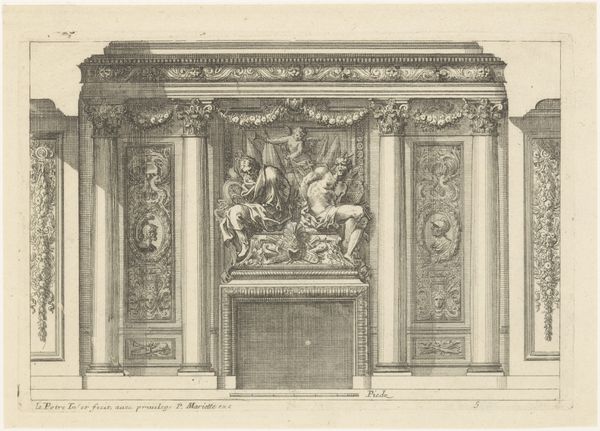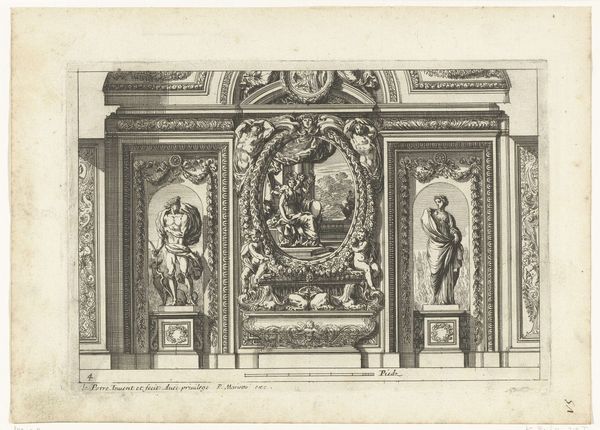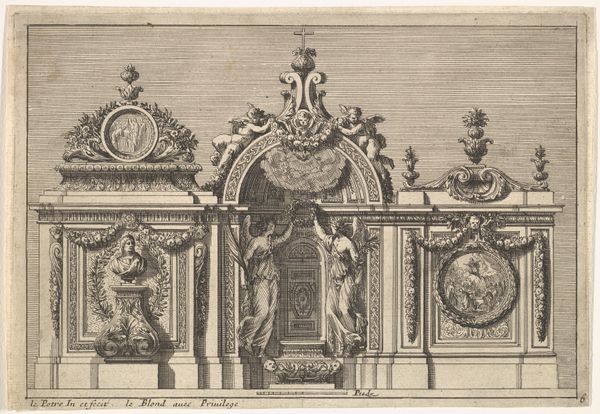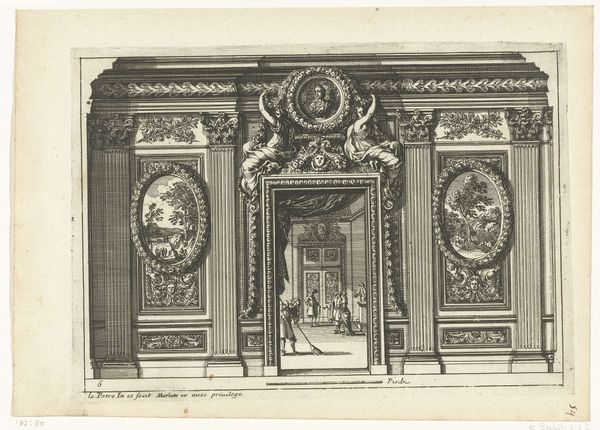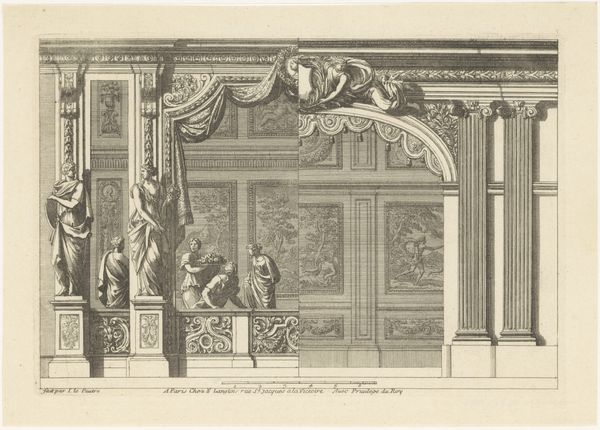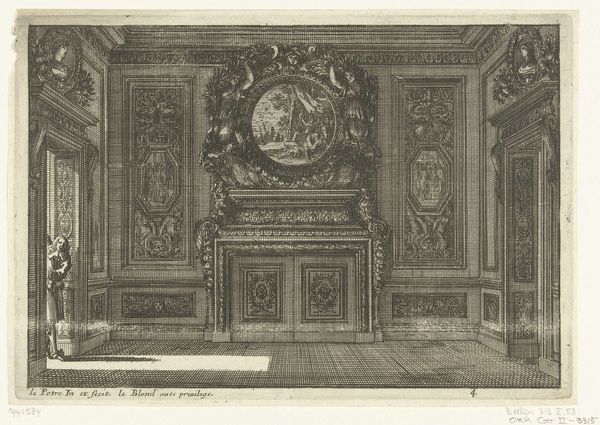
print, etching, engraving, architecture
#
baroque
#
pen drawing
# print
#
etching
#
etching
#
decorative-art
#
engraving
#
architecture
Dimensions: height 148 mm, width 214 mm
Copyright: Rijks Museum: Open Domain
Editor: So, this is “Schouw met keizersbuste,” a print etching and engraving by Jean Lepautre, dating from around 1658 to 1670. It depicts a very ornate fireplace. The level of detail is just incredible, so extravagant! How do we even begin to interpret a piece like this? Curator: It's a fantastic example of the Baroque era’s embrace of elaborate ornamentation and its use in shaping political and social spaces. The fireplace, far beyond a functional object, becomes a statement. Consider its placement: central to the room, visually asserting power. What message do you think that bust of the emperor is sending? Editor: Definitely power, right? Authority, grandeur… it's literally putting the emperor in the center of the home, maybe as a symbolic endorsement? But who was this design intended for? Was it just for royalty, or...? Curator: Not necessarily just for royalty. While royal courts certainly popularized these aesthetics, the rising merchant class also used such designs to emulate power and status. This print itself facilitated the dissemination of such styles. Imagine, you could purchase this design and then commission artisans to create a similar fireplace for your own home. Did the "originality" matter? Editor: Wow, so it’s not just about individual artistry, but about the cultural influence these designs could exert. So prints like this democratized luxury in a way? They set trends. Curator: Exactly! They allowed a broader segment of society to participate in visual culture. And, crucially, this participation shaped the broader political and social landscape, influencing how power was perceived and emulated. A silent propaganda. Editor: That really changes how I see decorative art. I’m now thinking of design not just as beautiful but also as actively participating in cultural and political dialogues. Curator: And that's exactly why these works are so important for us to study, and understand the role of images and objects.
Comments
No comments
Be the first to comment and join the conversation on the ultimate creative platform.

